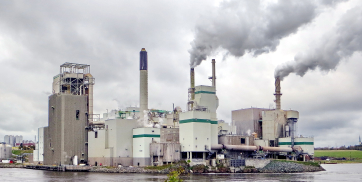This week’s Highwood Bulletin covers new research on satellite detection of methane leaks, insights into Western Canada’s natural gas emissions intensity, guidance from the International Energy Agency on how to achieve 75% methane reductions, a commentary on anticipated US EPA methane rules, an industry report on best practices for flaring and emissions management, a second regulatory Alt-FEMP approval for continuous methane monitoring by Qube Technologies, courses, conferences, funding, hiring, and more!
Research: WorldView-3 Satellite Imaging of High-Resolution Methane Plumes
A new study by researchers in Spain has demonstrated that the commercial WorldView-3 satellite may have a role to play in space-borne methane monitoring. Performance is better over bright and homogenous areas and in some cases the team was able to identify sources with emission rates below 100 kg/h. Read more about this important study here.
Research: Low Carbon Intensity of Canada’s Natural Gas
A new paper led by researchers at the University of Calgary estimates that upstream emissions intensity for a Western Canadian producer is between 3.1 – 4.0 gCO2e/MJ. This is much lower than the average intensity in British Columbia (6.2 – 12 gCO2e/MJ) and the U.S. average (15 gCO2e/MJ). However, compared to the U.S., public data in Canada is largely inadequate for the intensity model used, suggesting that more rigorous data collection and reporting should be required. Read the study here.
Report: IEA on Curtailing Fossil Fuel Methane Emissions
A new report by the International Energy Agency proposes practical actions for companies and countries that can lead to a 75% reduction in fossil fuel methane emissions. The report includes a detailed methane abatement cost curve and calls on policy actions to influence countries and production zones with weak methane regulations. Access the full report here.
Report: Improving U.S. EPA Methane Regulations
New methane regulations are expected soon from the U.S. Environmental Protection Agency. A new commentary by Dr. Robert Kleinberg of Columbia University’s Center on Global Energy Policy draws attention to flaws in historical and existing regulations and proposes performance-based methane regulations. Dr. Kleinberg argues that top-down methane monitoring technologies such as aircraft and continuous sensors are sufficiently advanced to enable this shift. Read the commentary here.
Report: Best Practices for Emissions Management and Flaring
A new report by the Texas Methane and Flaring Coalition has been released to help companies reduce flaring and enable industry-led emissions management solutions. In their report, the industry group advocates for eliminating high-bleed pneumatic devices and adopting innovative new methane monitoring technologies. Access the report here.
Qube Technologies Secures Second Alt-FEMP with Ember Resources
Qube Technologies and Ember Resources have been approved by the Alberta Energy Regulator to use continuous methane monitoring in place of traditional optical gas imaging (OGI) inspections. Highwood worked closed with Qube and Ember to demonstrate emissions reduction equivalency and secure approval. Read the press release here.
Conference: CH4 Connections, Colorado, Oct 12-13
Ready for one of the best methane events of the year? This year Highwood Emissions Management is sponsoring CH4 Connections, hosted in Fort Collins by our friends at Gas Technology Institute (GTI). Also, don’t miss out on a presentation by Highwood’s Thomas Fox, who will be speaking on a panel called “The Role of Methane Accounting in a Low Carbon World”. Register here and see you in Colorado.
Scope 1, 2, and 3 Emissions Courses Return
Two emissions management courses are back by popular demand. Join instructor Jessica Shumlich (Highwood’s CEO) as she shares her extensive knowledge on Scope 1 emissions (register here). If you’re already familiar with the basics, you can take her Scope 2 and 3 emissions course by registering here. These courses are offered in partnership with our friends at JWN Energy.
Funding Opportunity: Round 3 of NRCan’s $675MM ERF is here!
NRCan has opened a third round of the Emissions Reduction Fund. If you have an emissions reduction project or are looking for potential projects to reduce your emissions, funding is available. Reach out to Highwood to chat through project options, eligibility, or even to perform a comprehensive analysis of what projects fit your particular site needs.
Join our Team! Highwood is Hiring!
Highwood is always looking for bright folks who want to help us change the world for the better. If you have experience in greenhouse gas emissions management and you’re looking for a career change, please reach out!




